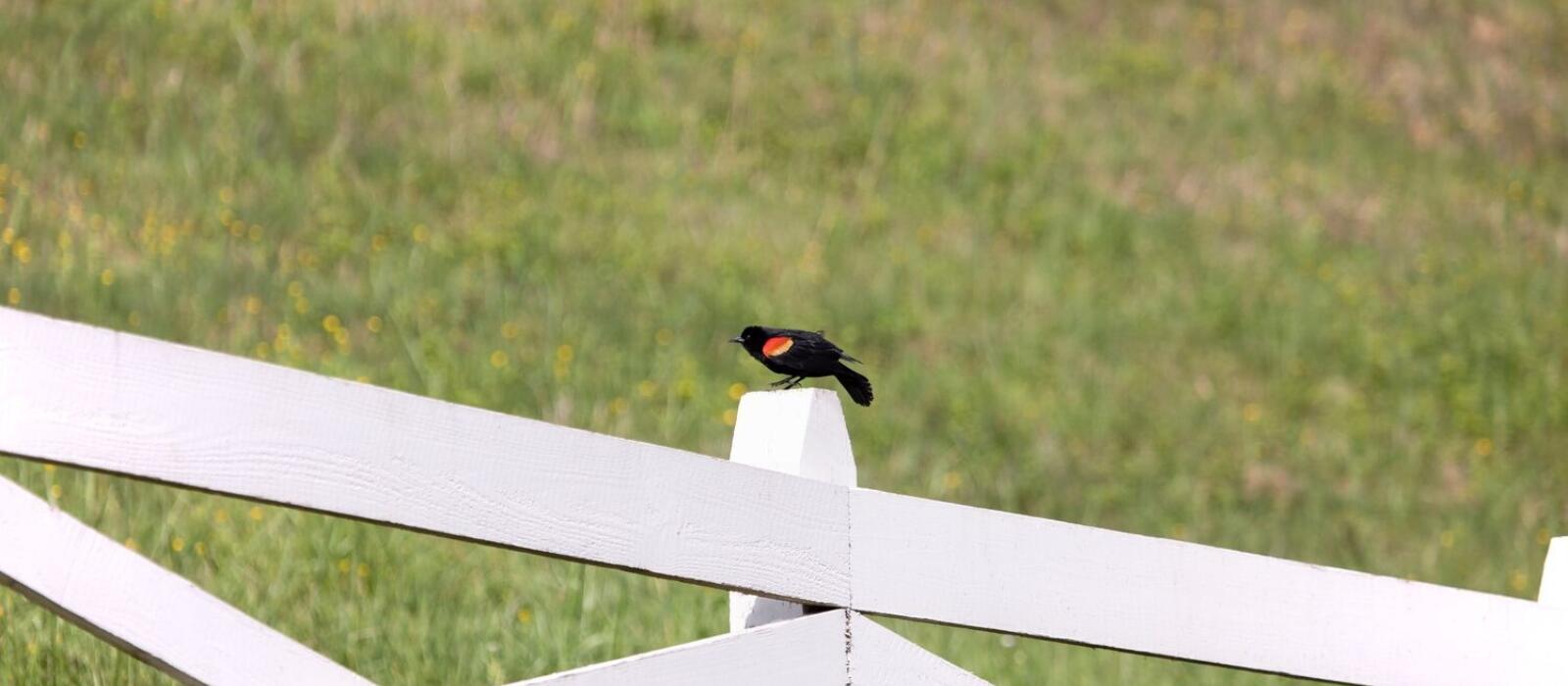Story
Spring Migration at Blackberry Farm

Just as the land grows and changes with refreshed energy for Spring, the animal kingdom resurfaces with new life as the season changes. With Spring comes the return of migrating birds, who will soon fill the air and the trees around Blackberry Farm with their jubilant calls. We checked in with Tom Howe, a birding expert who leads guides birdwatching adventures at the Farm, about what he looks for as Spring approaches.
Spring migration is not as complex as one might think. The two basic factors that control its timing are weather and an internal clock. The latter is, at least in part, affected by the changing length of daylight that stimulates animal hormones. Birds that only migrate short distances, such as to the southern United States, are more able to discern local weather patterns and adjust their migration accordingly. But birds that migrate long distances to the tropics of Central and South America must be driven by their instinctual internal clock since they have no way of adjusting to the weather conditions until they get to America.
Each species of bird has its own clock which will time their arrival on their breeding ground when their food supply has hopefully become available. Therefore, some birds that depend on flying or ground-dwelling insects, for instance, can arrive well before those that depend on caterpillars in the trees, requiring that the trees at least be partially leafed out.
For the early arrivals at Blackberry that tell us Spring is beginning to peak through, the first is usually the Red-winged Blackbird which nests around the Walland Pond. One can hear them calling in the middle of February. Then, in early March, you begin to see Barn Swallows and the first warbler to arrive – the Louisiana Waterthrush. The latter feeds along Hesse Creek and its tributaries on aquatic insects.
The majority of migrants, though, won’t arrive until early to mid-April, once the trees and flowers pop out. These include the favorite Ruby-throated Hummingbird, Wood Thrush, Orchard Oriole and finally, in the third week, the Indigo Bunting, perhaps Blackberry Farm’s signature bird. In mid-April, you may also hear Whippoorwills calling in the evening. When that happens, you know warm weather is right around the corner.
With Spring comes nesting season. Birds that live here year-round don’t depend on caterpillars and will begin nesting quite early. I’ve seen Mourning Doves sitting on eggs on Valentine’s Day! Bluebirds, Cardinals, Carolina Wrens and Song Sparrows aren’t far behind, weather permitting.
It would be hard to pinpoint my favorite bird seen at Blackberry Farm, but I genuinely get a thrill every time I get to show our guests one of the Bald Eagles that occasionally flies over and even lands in our trees.
There are many birds that only pass through the property on their way farther north or even just to the Smokies. One I hope to see and show others some day is the beautiful Golden-winged Warbler. It nests in rather early successional habitat above 2500 feet. It was once common in the Smokies in the few decades shortly after logging operations, but as the forest grew up and closed in, the birds were forced to move on to a better habitat. Interestingly, it was this bird, which a University of Tennessee professor showed, that can exercise “reverse migration.” Shortly after they arrived on their nesting grounds in the Cumberlands, they somehow detected a huge storm approaching that was still beyond west Tennessee. They left the area and returned to the Gulf Coast, only to quickly return a couple of days after the storm had passed. When birders found this out, they shook their heads in amazement at these incredible creatures.
– Tom Howe
